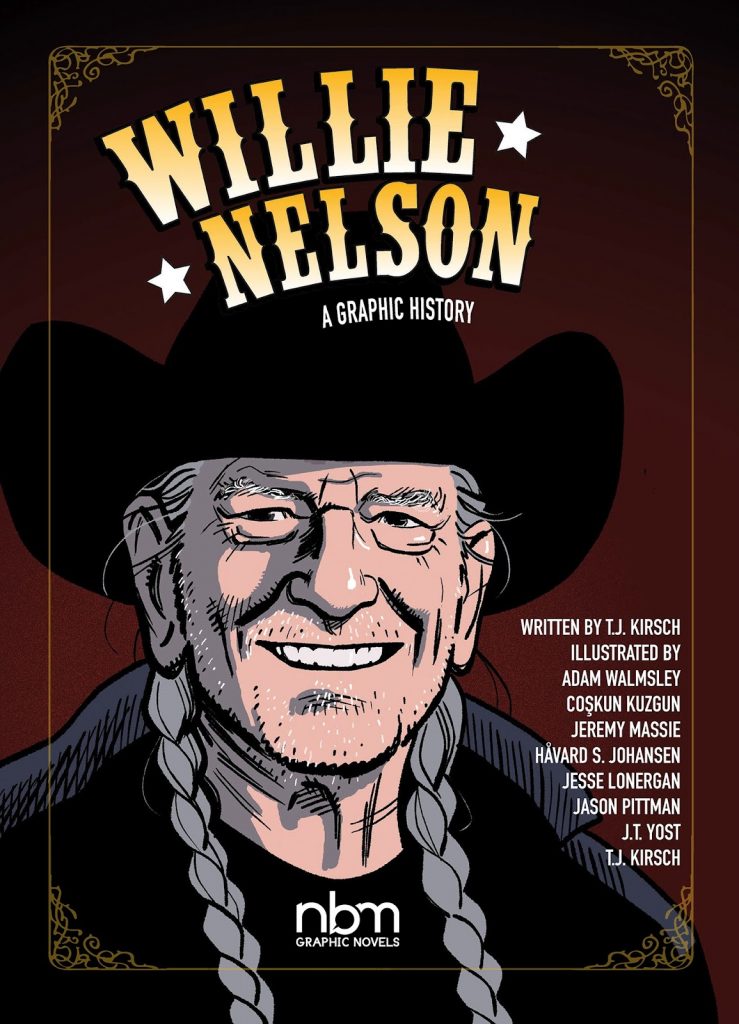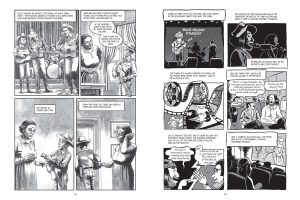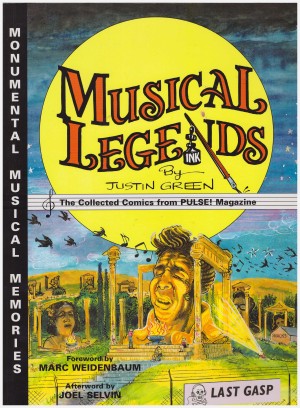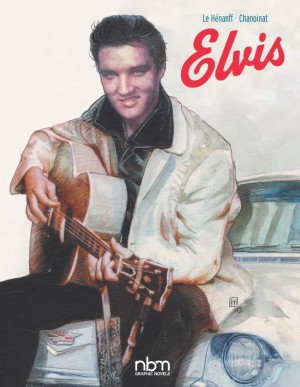Review by Frank Plowright
Willie Nelson is an unconventional icon. In a country where appearance is so important, he’s no oil painting, and vanity has never seemed a priority. He’s certainly had his demons, and at times he’s seemed almost wilful in straying from convention. While having a downhome quality and able to hold a tune, his singing voice isn’t remarkable, but combine it with the heart-rending songs he writes and his star sparkles.
T. J. Kirsch’s biography doesn’t trouble itself much with questions of appeal or dig too deeply into the reasons behind some events and decisions, but as an illustrated run through of a life hardly lacking in incident even before success, it hits the right notes. Kirsch breaks down Nelson’s life into seven broad periods, plus a prologue and epilogue, each is illustrated by a different artist, with Kirsch himself picking up the final chapter. The complete contrast in visual styles is supplied by the sample art showcasing the realism supplied by Coşkun Kuzgun of Nelson’s younger days and the loose, almost underground cartooning of J.T. Yost. While the interpretations vary, they’re all valid, although Håvard S. Johansen’s less imaginative storytelling is apparent.
Nelson’s life is one of contradictions. To rephrase his 1950s radio show introduction, he’s a pot-smoking, god-fearing, guitar-plucking, hard drinking, family-loving, always-hustling, pill-popping, bandana-wearing, serial shagger from Hill County Texas, yet it’s those contradictions and living an unpredictable life that make him interesting.
Sticking to plain facts is plain frustrating at times. It’s difficult to understand how the major country stars of the early 1960s had big hits with Nelson songs like Crazy, Hello Walls, and Funny How Time Slips Away, yet he needed to pick up gigs as a bassist while his wife worked in a bar. A few parties above family needs just doesn’t cover it. However, what Kirsch brings out is that musically at least, every one of Nelson’s decisions is sound and it’s the music establishment that’s wrong, never more so than in rejecting his Stardust album of standards.
Kirsch has the balance right in focussing more on early struggles than later fame and Nelson transcending genre limitations, so anyone who’s enjoyed Nelson’s music and wants to find out more about the man behind it is given a thorough primer with A Graphic History. Those wanting to learn more about whys and wherefores and a greater understanding of the man himself might be better off with a prose biography.





